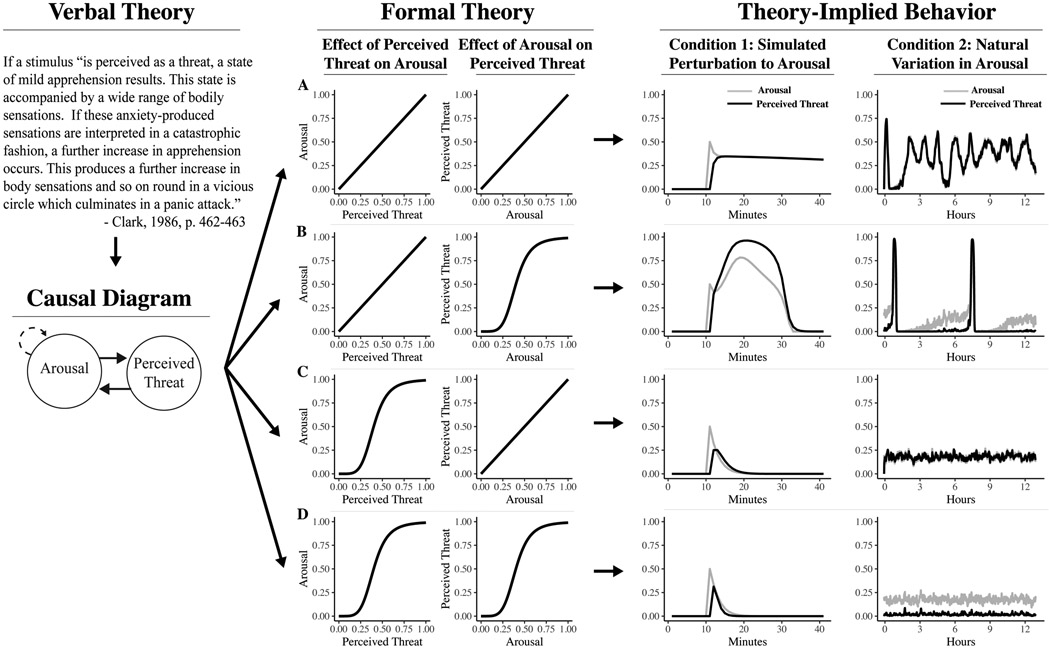Figure 1:
The verbal theory of panic attacks expresses the theory’s structure in words, positing a positive feedback loop between arousal and perceived threat. This structure can be expressed as a causal diagram, where solid arrows represent amplifying effects and dashed arrows represent dampening effects. The dampening self-loop on arousal represents the effect of homeostatic feedback on elevated arousal (see Appendix A). Due to its imprecision, the verbal theory can be interpreted in many ways. We present four possible formalizations (A-D), defining the effects of arousal on perceived threat and the effect of perceived threat on arousal as being either linear or sigmoidal. We then simulated how an individual’s target system would evolve over time according to each formalization of this theory. We did so in two conditions. In Condition 1, we perturbed the system by inducing a specified level of arousal (0.50) at time point 10 and evaluating how the system responds. In Condition 2, we did not perturb the system, but rather incorporated stochastic variation in arousal to represent natural fluctuations in arousal from internal or external stimuli.

